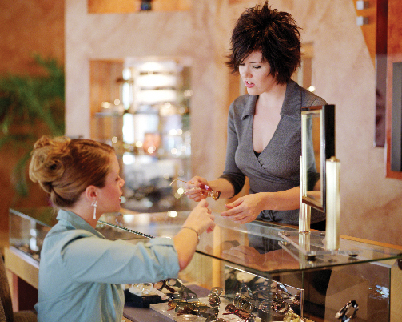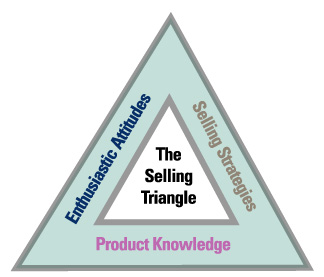You may not know it, but it takes an entire ophthalmic practice to sell eyewear. Even though all your physicians and clinical and business staff members aren't directly involved in optical dispensing, the feelings a patient develops during the time she interacts with your staff and undergoes tests and treatment actually impact what she will or won't do when she finally arrives at your optical shop.
Since selecting eyewear is an emotional process that's one part identity statement, one part fashion statement and one part impulse purchase, your whole office must create an experience that makes patients feel good about investing in your eyewear. Here's my advice on how you can enhance the patient experience, based on more than 25 years of experience in optical dispensing.
1. Identify and consistently promote your brand.
We know the entire office reflects on the physician-owners. But did you know it reflects on the eyewear in your optical? If anything about your office fails to say upscale, professional, exceptional—then patients won't think your eyewear is stylish and of good quality either. Your décor can say "medical" without being sterile, and it should. Lighting and music should be pleasant, and chairs should be comfortable. Invest in some striking artwork. Require staff to speak quietly and courteously to patients and each other, and make sure you set a positive example.

2. Dress the part.
Although you may prefer for your techs to wear white clinic jackets, make sure they don't wear them over scrubs, which are for the OR, and have no place in a medical office. Require all staff to wear nice office attire; clinical staff can wear clean clinic jackets over top. Some practices give staff members a budget for purchasing office clothes, but at the least you should supply clinic jackets and a laundry service. Everyone should have a professional-looking nametag, with only first names being necessary for staff. Optical workers should look professional and fashionable, but don't let fashion fads into your office! The office dress code should clearly explain that there will be no tight clothing or short skirts, no midriffs showing, no open-toed shoes, no visible tattoos, no visible piercings (that includes tongue studs) other than earlobes. Put the rules in your office manual, and assign your most tasteful employee to be your "fashion police."
3. Invest in staff development.
Encourage and provide continuing education for all staff. This will improve skills as well as raise morale. You can send staff outside the practice for class or bring in experts to give in-service talks. Business staff can attend coding and insurance seminars, take a class on marketing or brush up computer skills. Techs should pursue clinical and contact lens certification. Opticians should learn more about the art of selling. If they aren't ABO-certified, they should be. Managers should attend seminars at ophthalmology meetings, or even go "back to school" at the nearest community college.
4. Clarify expectations.
Have you ever told your staff what you expect of them? Given a likely generation gap, a possible gender gap and all the possible ethnic diversity permutations, spelling out your expectations for behavior and performance is the only policy that makes sense. Likewise, invite your staff to express what they expect of you, your partners and office manager. This is a great way to discover unrealistic expectations, as well as find out what matters the most to staff members. Be sure to establish a channel of communication that permits staff to come directly to you on sensitive issues. For instance, if your office manager is the problem person (or is best friends with the problem person), the staff is never going to approach him or her about it.
5. Implement the "selling triangle."

Now we're talking about what goes on inside your optical. You can have a terrific environment in the rest of your office, but the optical still has to do its job. There's something we call the selling triangle, and it's made up of:
• Product knowledge
• Selling strategies
• Enthusiastic attitudes
Send your staff to optical shows, or bring in reps or optical consultants to teach them about the latest products. Make sure that together, they develop selling strategies geared to your particular patient population. Sales training is a must. You should also make an enthusiastic smile and friendly demeanor part of the job description.
6. Don't call it a "dispensary."
Your optical department needs a more fashion-oriented name, such as "Eyewear Gallery" or "Eyewear Boutique." This makes the $600 price tag on a fashionable pair of glasses much easier to accept. Within your optical, make sure your staff is beautifully dressed and wearing the latest eyewear—even if they're emmetropes! Give them the budget to create beautiful merchandising displays that change according to the season. Product mix should be monitored carefully and inventory managed well. Introduce price points to increase profit—place frames in one of several price groupings to help patients perceive the ascending value of the eyewear.
7. Make time for productive staff meetings.
Close the office for one hour a week and include all staff in a meeting. Promote an open exchange of comments and information. Assign topics to various staff and ask them to present to the entire group. Sometimes invite a speaker, such as an instrument or frame rep, or a subspecialist with whom you regularly work. Plan projects together, prioritize them and then complete them by assigning responsibility and setting start and completion dates. Dissect problems or challenges together, and develop solutions. Celebrate successes with an office party, dinner out with staff and spouses, or a night at the theater. Whatever amount of money you spend will come back to you in improved staff morale and motivation, and likely, increased sales in your Eyewear Gallery.
Ms. Brighton, an optical dispenser in private eyecare practices for more than 25 years, currently operates Judie Brighton & Associates. She may be reached at jbrighton@tc3net.com.




